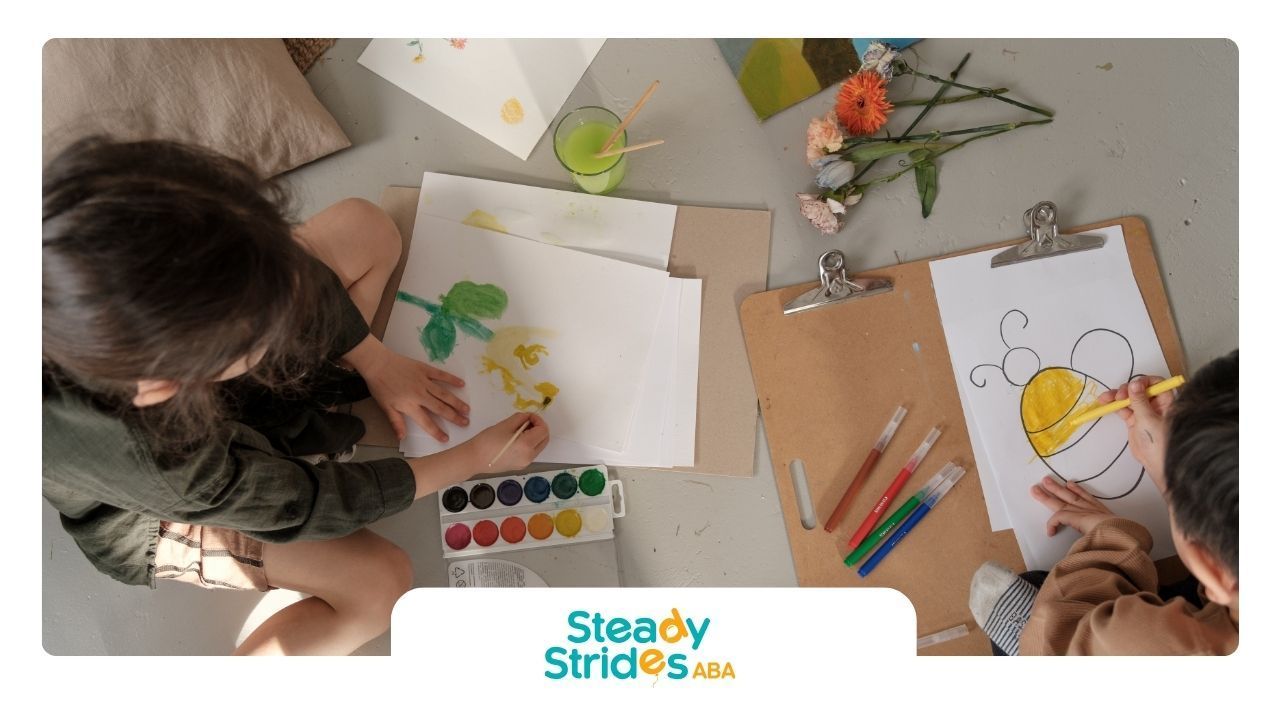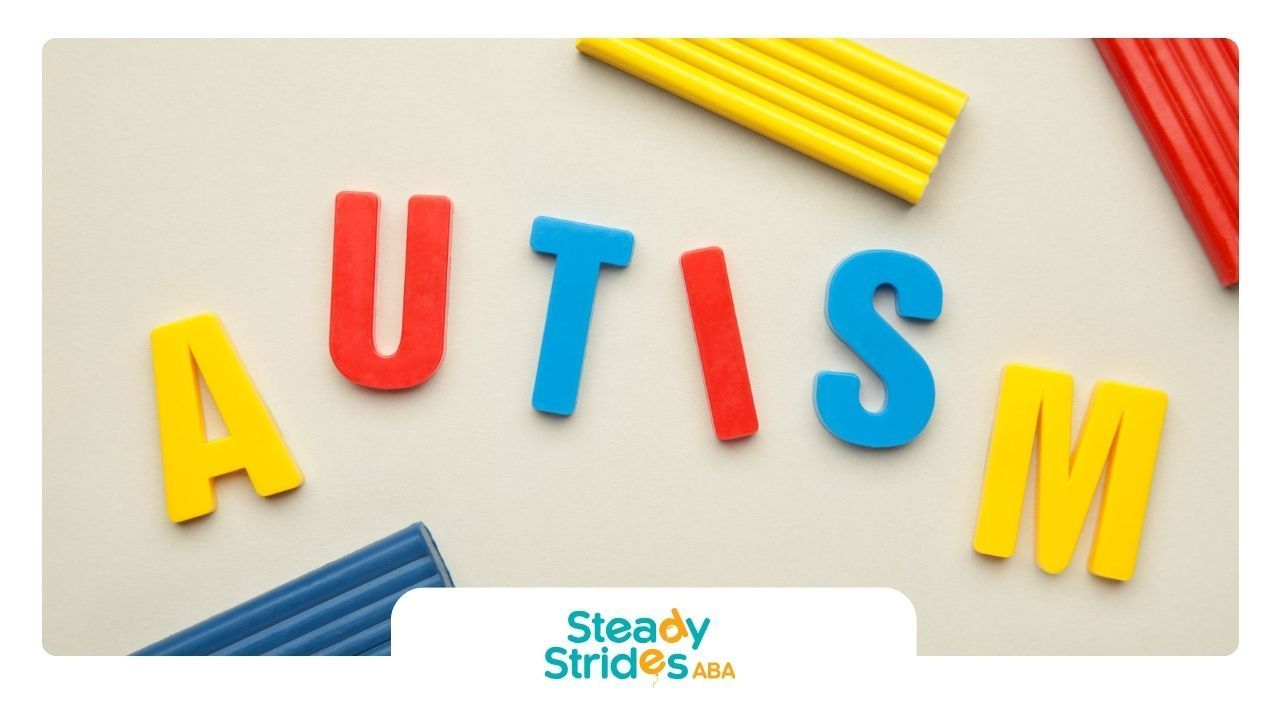Applied Behavior Analysis (ABA) therapy uses set ways to teach important skills. But naturalistic teaching is more flexible and fits better into the daily lives of children with autism spectrum disorder (ASD). Unlike older ways, naturalistic teaching strategies use behavior analysis in day-to-day activities. They help kids grow in new ways and be more involved by adding learning into play, normal routines, and moments made just for them. This approach helps children with autism spectrum disorder build new skills and use them in other areas of life. It also makes sure they can learn in ways that matter as they go through their daily lives. Let’s take a closer look at what naturalistic teaching is, what benefits it brings, and how it can be used.
Naturalistic Teaching ABA Definition and Core Principles
Naturalistic teaching comes from applied behavior analysis (ABA). This way of teaching uses the learner's own daily life and natural settings to help with skill acquisition. In this approach, teachers reinforce meaningful interactions that connect with what the learner likes. The main ideas are to build communication skills, improve social skills, and offer learning opportunities during daily routines. This broader approach helps bring about positive behavior change and adaptive growth. It helps people learn skills that they can use in different environments. This makes life better for the learner.
What is naturalistic teaching in ABA therapy?
Naturalistic teaching in ABA therapy refers to a child-centered approach that utilizes naturally occurring opportunities for learning. This method focuses on engaging children in real-life situations, promoting functional skills and social interactions. It emphasizes play-based learning, ensuring that lessons are meaningful and relevant to the child's everyday experiences.
What is Naturalistic Teaching in ABA?
Naturalistic teaching in ABA therapy gives children learning opportunities in places they know well, like home, school, or the local community. This naturalistic approach is different from discrete trial training, which often happens in a clinic with set steps. In this method, the child starts many of the activities and the therapist joins in. When a child has autism spectrum disorder, learning inside a natural environment has benefits. The child gets to learn while doing everyday things, mixing new skills into daily life. As an example, a therapist might help a child learn social skills or ways to talk while shopping for food.
This real-world setting means the person can use what they learn where it truly counts. Skills can grow during playtime or when doing simple daily tasks, not just during set therapy times. Naturalistic teaching helps build independence and makes a person’s life work better overall. By making ABA therapy fit with the real world, this way of teaching is changing how people teach behavioral and social skills.
Key Principles of Naturalistic Teaching ABA
To better understand naturalistic teaching ABA strategies, here are some key points:
- Child’s Motivation: The activities focus on what the child likes. This helps keep them excited and involved.
- Learning Opportunities: Teaching happens during real moments, such as daily tasks, watching, or play time.
- Positive Reinforcement: When the child does something good, they get praise or something they like. This helps them do the good thing again.
- Real-Life Context: Skills are taught in the child's own space, like their home or classroom. This way, it is easier for them to use what they learn in other places, too.
- Flexibility: Changes are made to match the child’s speed and what makes them comfortable.
The principles of naturalistic teaching come together to build a meaningful learning experience. They help boost the child’s social and communication skills in their natural environment. Now, let's look at how these ideas help during therapy sessions.
Benefits of Naturalistic Teaching in ABA Therapy
Naturalistic teaching ABA is very helpful for skill-building. It allows children to learn in places they know, like home or school, so they grow in a way that lasts. Therapists mix learning with daily routines. This helps kids stay interested and learn important social and communication skills. Naturalistic teaching also helps children get better at skills by letting them work on their own and try behaviors in different environments. Because of this, kids practice skills in new places, which leads to skill generalization and more engagement during therapy.
Promoting Skill Generalization and Independence
Skill generalization is very important for adaptive growth. Naturalistic teaching in ABA helps connect learning to daily life. For example, kids who learn a new skill while playing can use the same skill at school or in the park. They get to practice the desired behavior flexibly in natural settings. This way, the skill is not only used in therapy but is part of their daily lives.
This way of teaching puts focus on helping children be more independent. It encourages them to use newly learned skills during their usual routines. So if a child learns to talk more during a game, they might later use what they learn by asking for their favorite snack at home. Using naturalistic teaching in therapy supports and strengthens the desired behavior. This helps them use the skill in daily lives outside the therapy center.
Enhancing Motivation and Engagement
By focusing on what the child likes, naturalistic teaching ABA helps keep the child involved during therapy. For example, if a child plays with cars, the therapist can ask the child to say the car’s colors or make car sounds like “vroom.” This helps the lesson feel fun and easy for the child.
Motivation gets better when the child gets to pick the toy or activity. The therapist adds in learning goals while following the child’s lead. Language skills can grow during play without stopping the child from paying attention. When the child is asked to show what they want, it helps them build both communication skills and social interaction.
With this way of teaching, therapists use the child’s interests to keep them interested, so they learn life skills while still enjoying the time.
Types of Naturalistic Teaching Strategies in ABA
Naturalistic teaching in ABA uses different ways to help kids learn during their daily lives. It helps you teach language through things that happen by chance, like incidental teaching. Pivotal response training is also part of this. These methods help make a better setting for kids to build new skills. When people use learning opportunities in natural settings, children can use new skills where it matters most. Here we look at two important naturalistic strategies: incidental teaching and pivotal response training.
Incidental Teaching: An Overview and Example
Incidental teaching uses what happens naturally to help a child learn in therapy sessions. This way of teaching takes the child’s interests and turns everyday moments into chances to learn new skills. It helps kids learn when they get interested in something, like a desired object or a favorite toy. When a child wants a toy, the therapist might ask the child to show what they want. The child could use words, a gesture, or sign language.
One example could be to put toys where the child can see them but not get them. The child will need to ask for help, either by speaking or signing, to get the toy. This method helps children use these new skills not just in the clinical setting, but in the natural environment of daily life. Kids get lots of practice, so their language grows and social skills get better. Learning fits naturally into what they do every day, making it easier for them to pick it up.
Pivotal Response Training (PRT) in Naturalistic Settings
Pivotal Response Training (PRT) works best when used in natural settings. It helps kids learn new things and build social interaction skills during their daily routines. This way, every day becomes full of learning opportunities. PRT uses what the child likes and finds interesting to motivate and help them pick up new skills. By putting focus on pivotal areas, for example, communication skills, PRT helps kids grow in ways that matter and makes their lives better.
Involving parents in pivotal response training makes the learning process stronger. It builds a clear link between learning in therapy and in daily life. With this method, kids can learn positive behavior and these can show up in different environments, not just in the classroom or clinic. PRT supports adaptive growth through real, hands-on practice and helps children carry their skills everywhere they go. This is a key part of naturalistic education and helps with skill generalization.
Naturalistic Teaching ABA Example Scenarios
Real-life situations make naturalistic ABA strategies work better. Children get to learn important skills during their daily routines. For example, they can work on talking skills at a grocery store. Or they may build social interaction skills while playing. These ways help put therapy right into the learner’s natural environment. The steps fit easily into what they do every day. Below, you will see how normal routines and playtimes can help with language and skill development, too. This shows how day-to-day life in the natural environment builds social skills as well.
Using Everyday Routines for Language Development
Daily routines like grocery shopping give many chances for naturalistic teaching ABA. For example, when a child wants a snack, you can help them ask for it by using words. The therapist, parent, or teacher shows how to make requests or give answers. This makes sure the therapy fits real-life events.
Naturalistic teaching methods are best used during these moments. They help make talking simple by letting children get what they want if they ask in the right way. When a child is asked to say the name or color of a fruit, it helps keep the child interested. This turns a simple trip to the store into a good learning experience. These ways help kids use language in their daily routines. With this, communication skills can grow in a natural way and fit into everyday life.
Social Skills Teaching Through Play-Based Interactions
Play-based interactions are a great and fun way to help children on the autism spectrum improve their social skills. When a child takes part in simple activities, like naming animals in a game or waiting for their turn with others, they start to use better social behaviors and communication. There is also a chance for the child to learn these social skills in natural settings. Therapists guide them while they play, which helps the child handle social challenges outside of a therapy center and in their daily life.
Role-playing games are used to teach important social behaviors, such as sharing toys with other kids or looking at someone while talking. These activities let children be in an environment that is both fun and gives them a chance to try meaningful interactions. In the long run, using play-based strategies not only supports the child now, but it also helps them grow as a person in the future.
How to Implement Naturalistic Teaching ABA at Home and School
Using naturalistic teaching in ABA can help make learning chances better at home and in school. Early intervention and parent training let caregivers help kids make real changes in behavior. They can use normal, everyday situations during daily routines for this. When teachers and therapists work together, the ways used to help these kids stay the same and become stronger. Next, we will see how being supportive and working as a team can make things better.
Creating a Supportive and Stimulating Environment
A good natural environment helps kids learn. Therapy fits right into the child’s normal spaces at home or at school. Caregivers and teachers can set up the area to help the child lead the activities, while still giving light teaching tips.
When you give kids different toys, books, or art tools, they stay interested. Therapists can use these things to create more learning opportunities that match what the child likes or needs. Kids can learn social skills at family dinners or practice talking with others by sharing stories. If you use positive reinforcement, you help the child grow good and helpful behaviors.
Collaborating with Parents, Teachers, and Therapists
Working together makes naturalistic teaching ABA stronger in different environments. Key partnerships make sure of these things:
- Consistency Across Routines: Using the same methods at home and school sets clear, shared goals.
- Parent Training: Helping caregivers see and use chances to build skills.
- Regular Therapy Sessions: Getting advice from therapists and making changes when needed.
- Shared Learning Materials: Making things like visual aids that everyone can use and understand.
- Effective Communication: Keeping teachers and caregivers updated about the same goals.
These strategies help with skill acquisition and make social engagement better in a real and lasting way.
Key Considerations and Challenges in Naturalistic Teaching
Putting naturalistic interventions into place takes care and focus on each person’s needs and struggles. Therapists need to change routines when it is needed and watch how things go closely. They have to make sure these changes fit with how the person is growing. Working together with caregivers is key, and staying open to different ways helps deal with any issues in behavior. Up next, we will talk about how to work with personal likes and how to check progress in a good way.
Addressing Individual Needs and Preferences
Each child is different and may need their own way of learning in therapy. To help, therapists take time to find out what each child likes, such as certain activities or ways to react. This helps them keep the learning fun and interesting. They make learning plans that mix goals for adaptive growth with the child’s personal likes. This approach keeps a balance between structured tasks and how the child naturally acts.
Sometimes the focus is on language skills, like when teaching non-verbal children. At other times, it may be about helping with feelings and emotional outbursts. ABA strategies change as the child learns, while still letting them have some control. This helps the child do well later in their life.
Monitoring Progress and Making Adjustments
A planned way to track changes helps therapists make their way of teaching better. They watch to see how you do over time. This lets them change their plans to match goals like better talking or steady behavior. Here is an example of a progress tracker.
| Skill | Baseline Behavior | Desired Outcome | Adjustments |
|---|---|---|---|
| Social Interaction | Hesitant to initiate | Responds actively in groups | Increase opportunities for group play |
| Language Skills | Limited vocab usage | Uses 3-5 new words daily | Introduce visual aids |
Looking often at how things are going helps make therapy better in real-life situations. This helps when working on language skills and social interaction in natural settings.
Conclusion
Naturalistic teaching in ABA therapy is all about teaching children in their everyday life. It uses real activities, like play and daily routines, to help them learn new things. This way, kids can use their skills in many places and with other people. Naturalistic teaching makes learning fun and helps children stay interested. It also helps them build social and communication skills. Using these ideas at home or at school can make a big difference in a child's learning experience. If you want to use naturalistic teaching or try ABA therapy for your child, it is a good idea to ask experts for help and support.
Steady Strides ABA is proud to be the best ABA provider in Texas, specializing in Naturalistic Teaching strategies that empower children with autism. Our expert therapists use real-life, play-based methods to teach essential skills, making learning both engaging and effective. With a focus on personalized care, Steady Strides ABA helps families foster long-lasting growth in communication, social skills, and more. Ready to see the difference Naturalistic Teaching can make for your child? Contact Steady Strides ABA today to start your journey.
Frequently Asked Questions
What is the difference between naturalistic teaching and traditional ABA?
Naturalistic teaching brings language skills and meaningful interactions into the child’s natural environment. This is different from traditional ABA, which often uses very structured ways, like discrete trial training, in clinic settings. The broader approach helps kids with adaptive growth because they learn during everyday activities. This makes learning more practical and easier for them to connect with real life.
How can parents use naturalistic teaching ABA at home?
Parents can use strategies from aba therapy in their daily routines. For example, they can add learning opportunities during mealtime, play, or even when out grocery shopping. Parent training helps caregivers make good moments for the child to learn in the natural environment. This can help with things like language use or motor skills.
What are some common naturalistic teaching ABA examples?
Incidental teaching helps people learn language skills during regular and real-life moments. For example, someone might ask for the name of a color while a child picks a toy. Therapists use pivotal response training to help with social interaction in daily lives. Both pivotal response and incidental teaching use the natural environment for learning. This way, daily lives and regular places become classrooms for language and social skills.
Is naturalistic teaching ABA effective for children with autism?
Yes, naturalistic intervention can help with skill acquisition, communication, and better behavior. When you use early intervention, professionals help children with autism spectrum disorder in their daily lives. This support can help them build new skills and learn to manage their feelings better. It can also help them handle different situations and make positive behavior change.
How do you measure success in naturalistic teaching ABA?
Success is often seen when people get better at skill generalization. It also shows by the way they master behaviors that are wanted, like social interaction. Another sign is when they add these new skills to their daily lives. In therapy, people use tracking charts. These charts help check progress. They set benchmarks that match with learning experience goals. This helps support each person’s growth and development.
Sources:
- https://www.nimh.nih.gov/health/topics/autism-spectrum-disorders-asd
- https://www.behavior-analysis.org/
- http://www.autism-help.org/intervention-naturalistic-teaching.htm
- https://www.ncbi.nlm.nih.gov/books/NBK221127/
- https://www.simplypsychology.org/positive-reinforcement.html
- https://www.webmd.com/parenting/what-is-incidental-teaching
- https://www.autismspeaks.org/pivotal-response-treatment-prt












